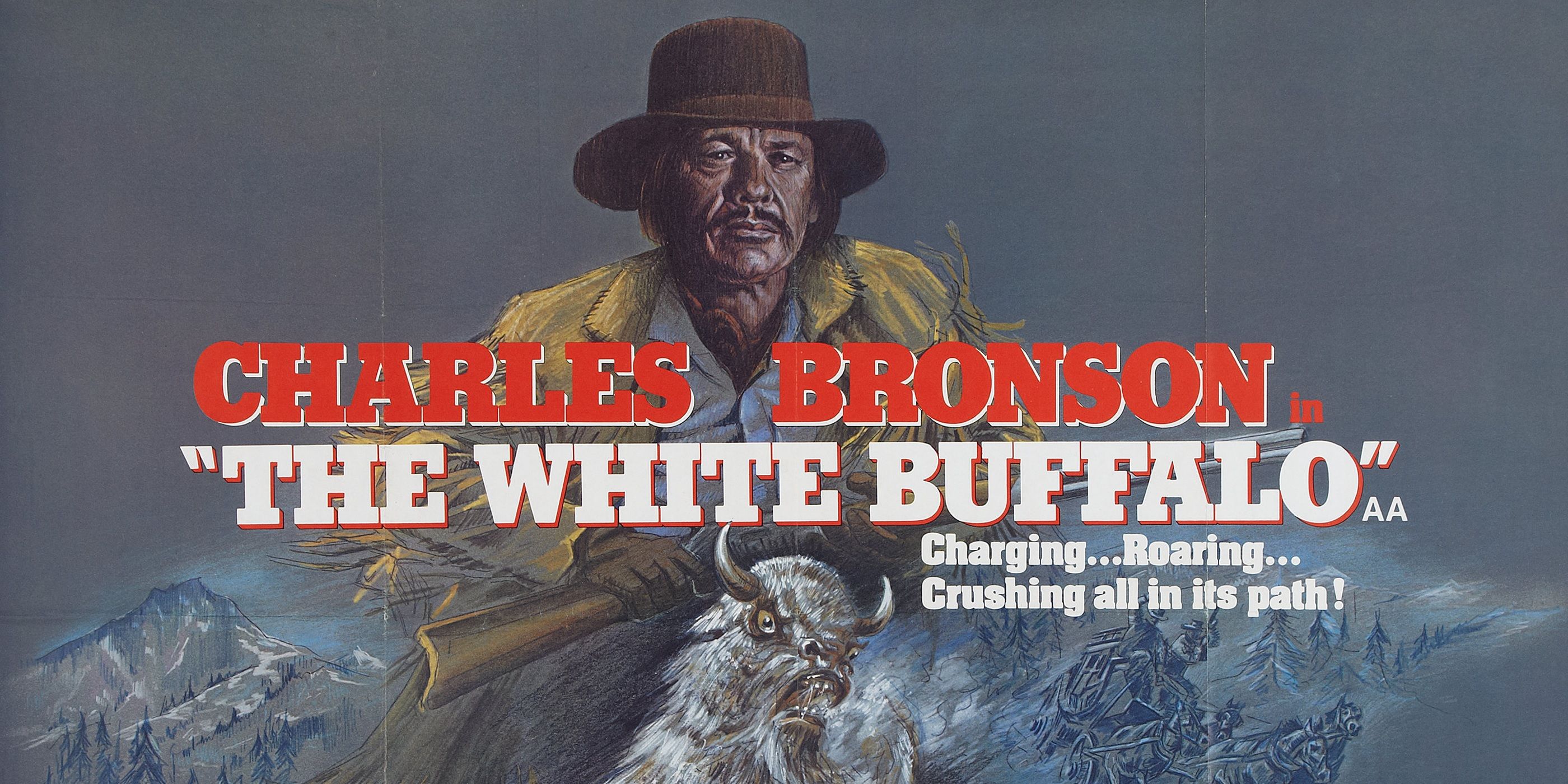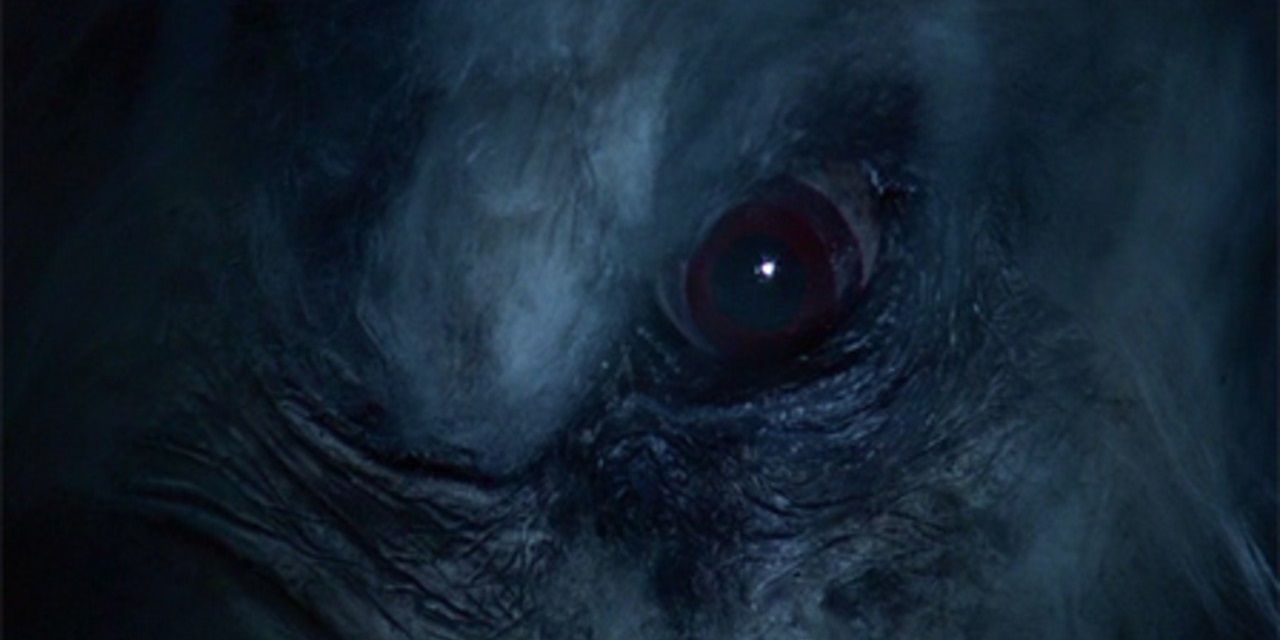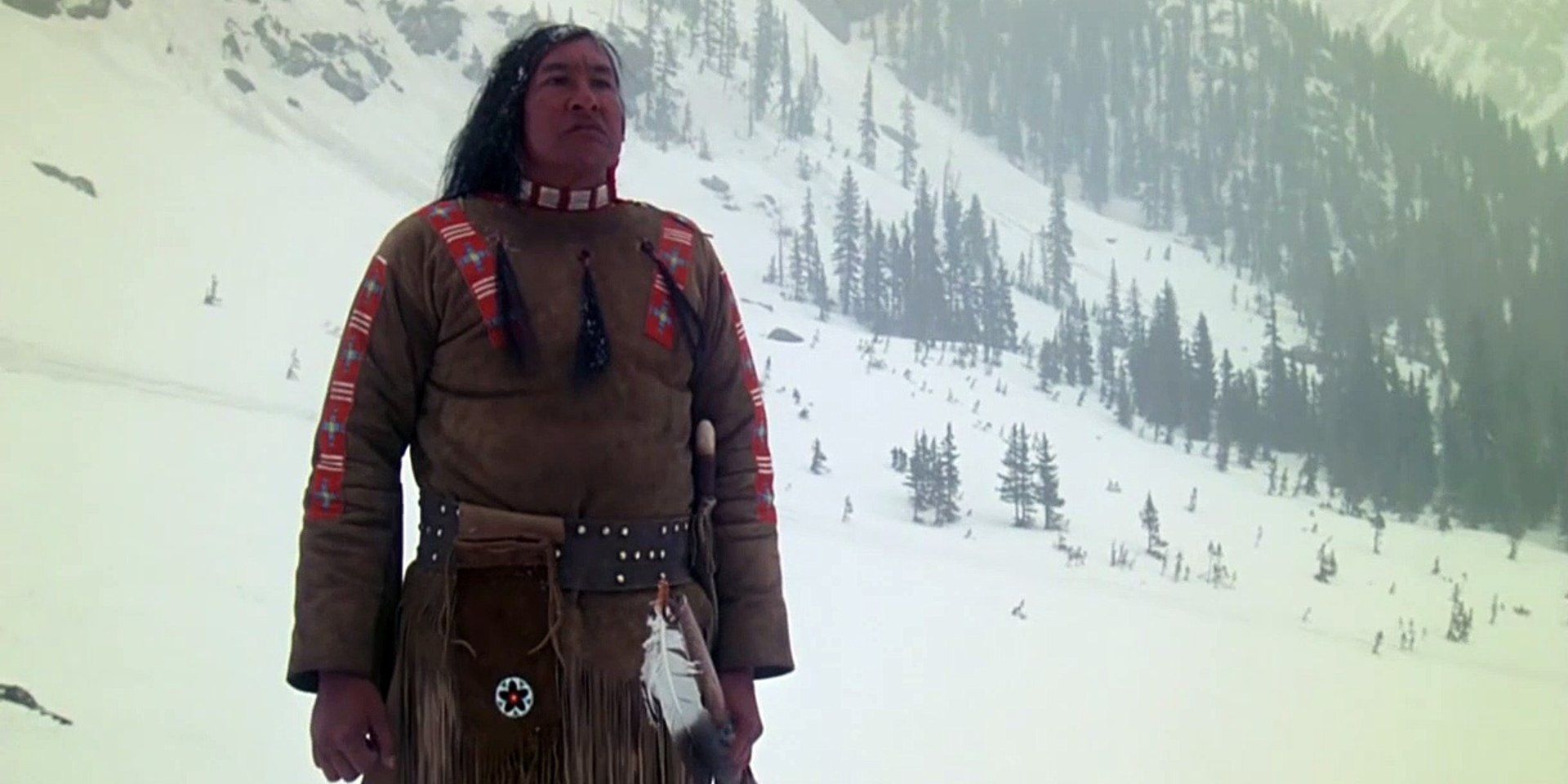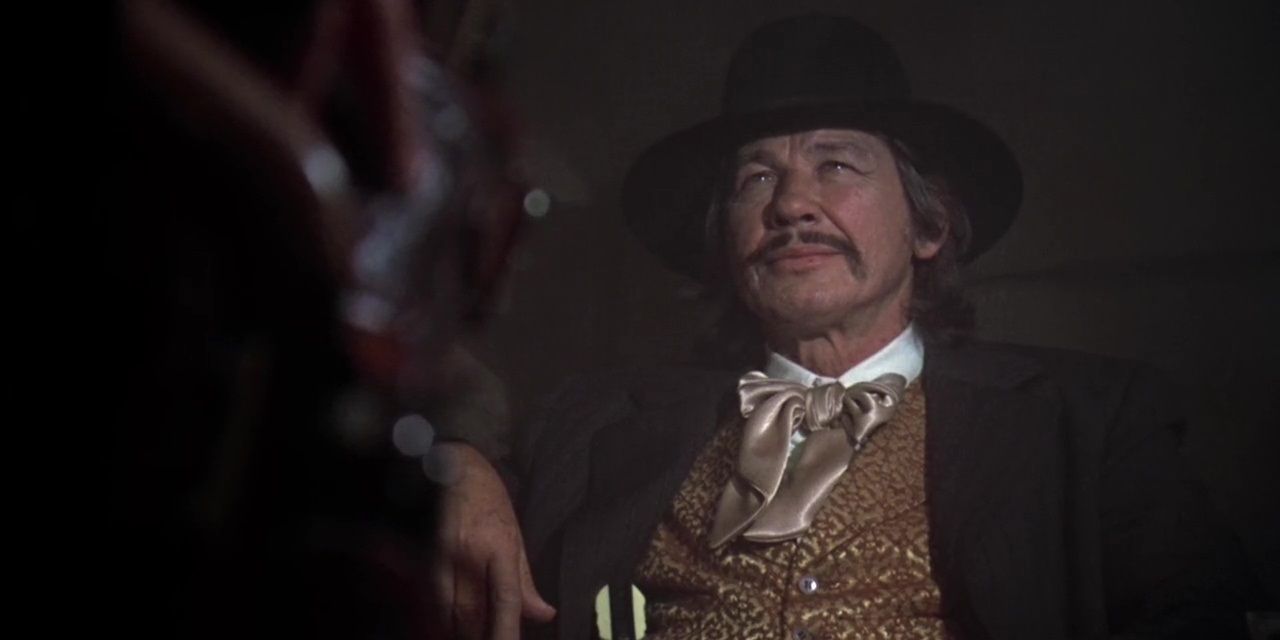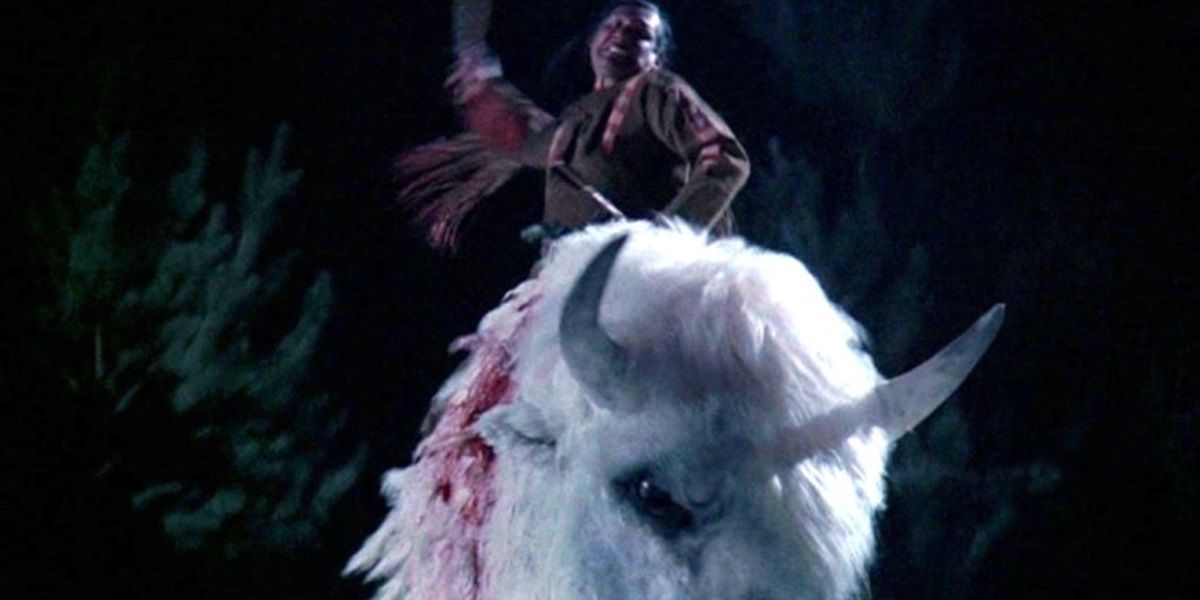Charles Bronson is a true screen legend. His star power is practically unparalleled and his commanding presence made him one of the only bona fide tough guys in Hollywood history. Along with Lee Marvin and Jim Brown, Bronson belongs to a brand of badass movie star that just doesn’t exist today.
Across his nearly 50-year acting career, Bronson starred in all kinds of movies: vigilante thrillers like Death Wish and Mr. Majestyk, war epics like The Dirty Dozen and The Great Escape, and westerns like The Magnificent Seven and Once Upon a Time in the West.
One of the actor’s strangest big-screen outings to the Old West was as much a monster movie as a straightforward western. Released in May 1977 to stiff box office competition from Star Wars and Smokey and the Bandit, The White Buffalo sees Bronson heading out into the snowy wilderness to kill a giant beast that’s been haunting his dreams.
Moby-Dick Of The West
Based on a novel by Richard Sale, The White Buffalo follows aging gunslinger “Wild Bill” Hickok, played by Bronson, who is plagued by nightmares featuring a giant white bison. Figuring that his destiny is to kill this buffalo, he heads west to track it down. Along the way, he encounters a legendary Lakota warrior named “Crazy Horse” who’s similarly bent on destroying the buffalo after it tore through his community and killed his infant daughter. Facing a common enemy they couldn’t hope to defeat alone, they team up.
In a 1976 L.A. Times piece entitled “An Intrepid Gunfighter Meets Fear,” director J. Lee Thompson described The White Buffalo as “Moby-Dick of the West.” Like the Herman Melville classic (though not quite as profound), The White Buffalo is about a man going out into the elements to face the physical manifestation of his fears. Instead of going to sea to kill a “white whale” like Captain Ahab, Wild Bill goes deep into the icy frontier to kill a white buffalo.
The White Buffalo Is Really About Friendship
The story is pure fiction, but Wild Bill and Crazy Horse are based on real people. Bronson is well-matched with his co-star Will Sampson, best known as “Chief” from One Flew Over the Cuckoo’s Nest, who brings real nuance to the proceedings. There is some substance to the story in this duo’s dynamic. Both Wild Bill and Crazy Horse are initially prejudiced against each other’s race, but as they reluctantly embark on a quest together with the same goal, they gradually lower their guard and become endeared to one another. Ultimately, it’s not really a movie about killing a big buffalo – it’s a movie about friendship.
In a scathing review of the novel, Larry McMurtry wrote that Sale “chose a topic with great possibilities, turned it into a sharpened stake, and proceeded to impale himself on it.” Reviews for the movie adaptation weren’t much kinder, with contemporary critics lamenting the thinly drawn characters and effects-driven climax. But the film moves at a brisk pace, and the spectacular finale makes up for any missteps with the themes and characterization. The joy of watching Charles Bronson fight hand-to-hand with a gigantic bison matches the joy of watching Jason Statham fight hand-to-hand with a 75-foot prehistoric shark in The Meg.
One of the most notable aspects of this movie, besides its delightfully ludicrous premise, is the quirky costume design. It’s as if Wes Anderson dressed these characters. With a black cowboy hat and a round-framed pair of sunglasses, Bronson looks like Will Smith in Wild Wild West. The score is also noteworthy, as it’s composed by John Barry, who’s most renowned for rearranging the James Bond theme that was initially recorded by Monty Norman.
Bronson’s Second Of Nine Movies With The Director
This was one of many collaborations between Bronson and Thompson. Starting with the Warner Bros. crime flick St. Ives, this actor-director pairing made nine movies together. By the end of their partnership, they were known for making perverse revenge thrillers for Cannon Films. 10 to Midnight saw Bronson taking on an incel serial killer who strips naked before attacking his victims, while Kinjite: Forbidden Subjects (Thompson’s final film) saw Bronson battling a pimp running a child prostitution ring.
In retrospect, The White Buffalo – the second film they made together – is one of Bronson and Thompson’s tamest and least exploitation-driven efforts. But that’s just by their standards; it’s still pretty grim and edgy. The killing of a baby in an early scene (Crazy Horse’s dark motivation for revenge against the buffalo) is exactly the kind of shocking, boundary-pushing plot point Thompson is known for.
17% On Rotten Tomatoes
As Wild Bill and Crazy Horse traverse the snowy plains of the West, Thompson quickly builds to a thrilling climax: their standoff with the infamous titular buffalo. Carlo Rambaldi, who won the Special Achievement Academy Award for Best Visual Effects for his work on the 1976 remake of King Kong, designed a full-size animatronic bison that slid around on tracks. These effects are a little clunky today, but they were impressive for the time (at least until Star Wars came along three weeks later with ILM’s groundbreaking miniatures).
With an abysmal 17% score on Rotten Tomatoes, The White Buffalo is far from a perfect movie. In fact, it barely qualifies as a good movie. But, as a western fantasy adventure with elements of a monster movie, it’s a totally unique movie. Wild Bill’s premonitions have a touch of Don’t Look Now, but with the absurdity of Raising Arizona. There’s nothing else quite like The White Buffalo. If David Lynch and Guillermo del Toro teamed up to co-direct a western, it would look something like this.

